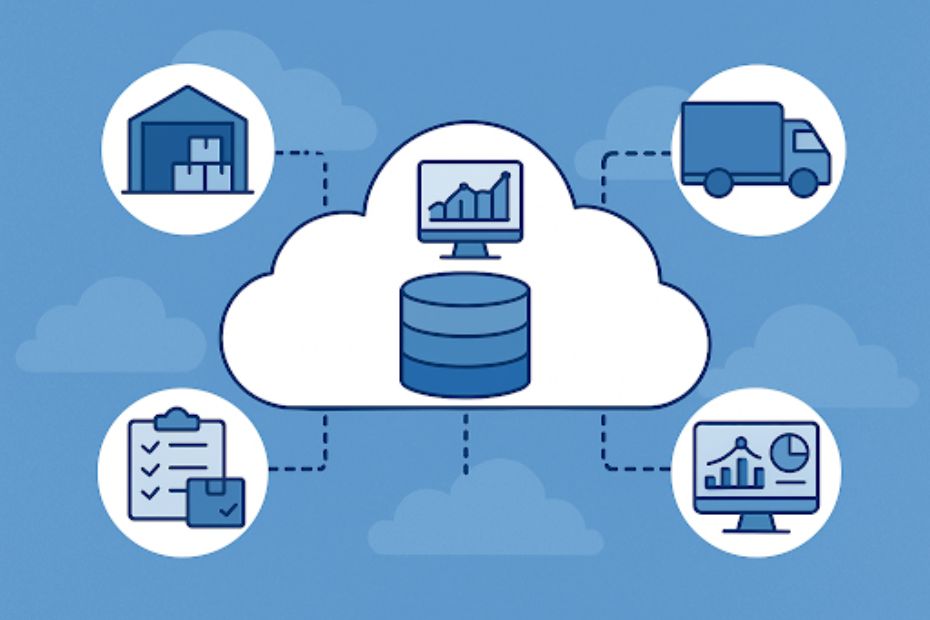You know how unpredictable supply chain operations can get—orders change, inventory runs low, deliveries get delayed. That’s where cloud-based supply chain management systems make a real difference. These platforms give you the ability to manage every moving part in real time, stay connected with partners, and adjust to shifting demands without being slowed down by outdated tools or siloed data. If you’re aiming for higher efficiency and lower operating risk, this isn’t just a tech upgrade—it’s the infrastructure your supply chain needs to stay competitive.
1. Real-Time Visibility Keeps You in Control
When you rely on manual updates or isolated systems, you’re always a step behind. With cloud-based supply chain tools, you’re working with live data—inventory counts, shipping progress, supplier status—all visible the moment something changes. You no longer need to wait for someone to send an update or compile a spreadsheet. That kind of lag can cost you, especially when you’re dealing with perishable goods, tight deadlines, or complex sourcing chains.
With cloud access, you can track inbound shipments, monitor inventory across multiple warehouses, and get alerts the moment something’s off track. You’re not just observing; you’re acting before delays turn into problems. This kind of responsiveness can save you a lot of money in expedited shipping and penalty fees.
2. Collaboration Becomes Seamless, Not Stressful
Supply chains don’t run in a vacuum—you rely on everyone from suppliers and freight carriers to distributors and third-party logistics providers. If your systems aren’t aligned, mistakes and miscommunication are bound to happen. Cloud-based platforms fix that by giving everyone access to the same real-time data from anywhere.
You can set permissions for each partner, share key documents instantly, and align on delivery schedules or order changes without back-and-forth emails or calls. This kind of transparency reduces guesswork, builds trust, and helps your team spend less time chasing updates and more time solving actual problems.
More importantly, when a supplier runs into issues or your customer changes a delivery window, you can coordinate fast. Everyone sees the change at once, so you’re not stuck playing phone tag to realign expectations.
3. You Can Scale Without Rebuilding Everything
Growth is great—until your current system can’t handle it. If you’re managing supply chain operations with traditional software, scaling usually means buying new licenses, upgrading servers, or onboarding more IT support. Cloud-based platforms shift that burden off your plate.
Whether you’re expanding into new markets or increasing order volume during peak seasons, you can scale usage with just a few clicks. No need to overhaul your entire infrastructure or delay expansion plans. It’s especially useful when you’re running seasonal operations or short-term contracts—you only pay for what you use and can scale down just as easily.
And since updates roll out automatically through the provider, you’re always working with the latest features and security standards without pausing operations for system maintenance or manual upgrades.
4. Lower Overhead Means More Room to Invest Elsewhere
One of the biggest draws of cloud-based systems is the cost efficiency. Traditional supply chain platforms often require a hefty investment in hardware, licenses, and IT support. And once something breaks or needs an update, you’re looking at more downtime and more bills. With cloud tools, most of that gets offloaded to the service provider.
You’re working with a subscription model, so your costs stay predictable. You’re also not locked into long-term contracts or expensive maintenance cycles. That gives you more flexibility in budgeting and frees up resources to invest in other areas—like warehouse automation, customer experience, or product innovation.
Plus, since you don’t need a full IT team to manage the system, your overhead shrinks. That means fewer headaches and more time to focus on core operations.
5. Security and Compliance Without the Stress
If you’re worried about cloud security, you’re not alone—but you should know that the top cloud providers have security protocols that are far more advanced than most in-house systems. Encryption, user access controls, and automatic backups are standard. Your data is stored in secure, redundant data centers with high-level monitoring.
When it comes to compliance—whether it’s with customs regulations, ISO standards, or internal audit trails—cloud systems help you stay audit-ready. You can track who accessed what, when changes were made, and how transactions flow through your system. That traceability gives you peace of mind when regulators or partners come calling.
Also, if disaster hits—natural or technical—you’re not losing your data. Cloud platforms offer fast recovery options that keep your operations running, even when local systems are down.
Top Cloud Supply Chain Benefits
- Real-time tracking and alerts
- Easy collaboration with suppliers and partners
- Scalable tools that grow with your business
- Reduced IT costs and infrastructure spending
- Strong data security and compliance support
In Conclusion
Running a supply chain today means managing constant change—demand shifts, supply shortages, labor issues, global shipping challenges. A cloud-based supply chain management system gives you the visibility, flexibility, and control to deal with all of it in real time. You reduce delays, lower costs, and keep partners in sync without heavy infrastructure or IT overhead. If you’re serious about efficiency and long-term growth, it’s not a matter of if you should move to the cloud—it’s when.
Want to dive deeper into how digital transformation is reshaping supply chain strategies? Tune in to my podcast on Spotify for expert insights, interviews, and actionable ideas to keep your operations ahead of the curve.

